CULTURED PEARLS
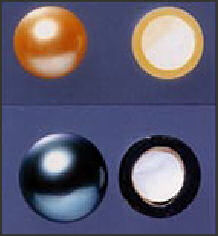
Cultured pearls are pearls cultivated from a spherical piece of shell, called a nucleus, placed into pearl oyster by a man. Layers of mother of pearl produced by the shell coat the nucleus and after six month to three years enough material has formed around the shell the pearl is ready for harvesting.
A perfectly round pea-size pearl sells for $75 to $100, compared to $4,000 for comparable natural pearl. It is difficult to tell a cultured pearl from a natural pearl by the naked eye. The primary difference is that a cultured pearl has a much more perfect shape. With a microscope you can see the surface texture of the two kinds of pearls is different.
The earliest forms of cultivated pearls were pearl Buddhas first produced in the 12th century by the Chinese. These tiny figurines were created by cementing a small Buddha carving of ivory, wood, stone or metal onto the shell of a freshwater mussel shell until they were coated with nacre. A similar technique is used today to create half pearls in freshwater oysters.
After hundred of years of trials and errors three Japanese working alone invented a technique for producing cultivated oysters at the beginning of the 20th century. One of the inventors was a teenage carpenter named Tatsuhei Mise and another was government marine biologist at Tokyo University named Tokichi Nishikawa. The other was Kokichi Mikimoto.
There are three main varieties of pearls: 1) white akoya pearls , mostly from Japan; 2) black, gold, white South Sea pearls, mostly from Tahiti, Australia and Indonesia; and 2) Chinese freshwater pearls. Akoya pearls are 5 to 9 millimeters in diameter and South Sea pearls have a diameter of 10 to 15 millimeters. Their thick nacre gives them their great size and a deep luster and makes them less likely to discolor of degenerate. . They are three to 20 times more expensive than Akoya pearls.
See Separate Articles PEARLS: HISTORY, TYPES AND CHARACTERISTICS factsanddetails.com OYSTERS: TYPES, CHARACTERISTICS AND FARMING ioa.factsanddetails.com
Kokichi Mikimoto and Cultured Pearls
Kokichi Mikimoto (1858-1954) was the man who created the cultured pearl business. The a son of noodle vendor from Mie prefecture in central Japan, he patented the world's first cultured round pearl and developed a method for producing "blister" (half pearls) and parlayed his patents into a massive fortune. At one time he owned 12 million oysters producing 75 percent of the world's pearls.
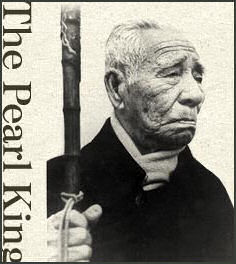
The first cultured pearl was taken from an oyster by Mikomoto’s wife. It was semicircular. It took Mikimoto an other 12 years to coax the oysters to deliver perfectly round ones. When Mikimoto launched his cultured pearls in London in 1919 at prices considerably less than natural pearls he created a worldwide sensation. Producers of natural pearls claimed the cultured pearls were inferior but eventually they were driven from the market. The introduction of cultured pearls meant that pearls were no longer the domain of the rich. Flappers in the 1920s wore long strings of them.
Mikimoto was a master salesmen and promoter. He exhibited models of the Liberty Bell and Japanese pagodas made from cultured pearls at world exhibitions to get his product accepted as "real pearls." In the 1930s, Mikimoto famously set on fire 750,000 inferior pearls that threaten Japan’s reputation as a producer of high-quality pearls. He also made news by addressing the Emperor and Empress with greetings below this normally used for royalty.
Mikimoto secured the patents for the tools and procedures to make cultured pearls. At first the oyster shells were harvested by the ama, the women divers, but later pearl farmers figured out how to grow baby oysters and have them ready to implant with nuclei in 60 days.
Making Cultured Pearls

Only a few species of oyster and freshwater mussels create quality pearls. On average, half of those seeded die or reject the bead. With luck 20 percent of the harvested pearls will be marketable and only 1 in 10 to one in 50 produce a round pearl of jewelry quality. The tools used for seeding and harvesting pearls resemble dental tools. A good technician can create different shaped pearls by the way he or she implants the bead.
Oysters relax and open when alone. Pearl seeders first place a wedge in the shell to keep it open and then make an incision with a surgical scalpel and insert a shell-bead nucleus (often a perfectly round pieces of mussel shell between .1 and .32 inches in diameter) into a tiny slit in the shell's fleshy mantle, which covers the interior of the shell.
Many of the nucleus are inserted in Japan by female technicians who can insert up to 1,000 nuclei a day (elsewhere in the world the work is done mainly be Japanese men). Perfectly placed nuclei result in perfectly round "eight-way-rollers." Misplaced ones result in misshapen pearls called "baroques." "Blister" pearls are cultured onto the shell rather than in the tissue.
Pearls can be raised in some species of freshwater oysters simply by cutting into the mantle. Most commercially raised oysters have been weakened by captivity and they are able to produce pearls only eight millimeters in diameter.
Pearl Products

Cultivated pearls are one of the world's cheapest gems. A US$1000 for a pearl necklace may seem like a lot of money. But consider that it is made up of 56 pearls which sell for $18.00 a piece. Necklaces selling for between $150 and $300 account for as much as 40 to 50 percent of the unit volume in trade.
The smallest pearls sold are about two millimeters in size. Eight millimeter pearl necklaces generally sell for two to three the price of a seven millimeter pearls. Today pearls are often bleached with hydrogen peroxide to remove blemishes and tinted with silver, cream, pink, yellow, green, blue and black dyes. No one is sure how pearls create their own natural colors. Five nuclei inserted into one oyster might produce five different colored pearls.
When buying pearls one dealer recommends that you purchase them from a trusted dealer, ask about nacre thickness, and stay away from ones obviously dyed. After purchasing them keep them clean and periodically restring necklaces. Pearls are also much softer than other precious stones. Body fluid, perfume and hair spray can eat away at the nacre and thinly coated pearls often have their nacre worn away after a couple of years.
Pearls too flawed to be sold as toothpaste are ground up in powder used in cosmetics and toothpaste as well as medicines to treat pregnancies, weak bodies, tooth cavities, stomach acid, and allergies.
Cultured Pearl Cultivation
Implanted oyster are returned to the sea, ideally for two to three years, in wire baskets suspended from wooden rafts or plastic buoys. After a few days in the water the inserted mantle tissue grows and wraps around the nucleus. Nacre is secreted from a sac in the mantle at the rate of a couple of layers a day (finished pearls have 1,000 or more layers of nacre around the nucleus).
Pearl oysters need unpolluted sea water, a relatively strong current and an ample supple of plankton. Occasionally the oysters are destroyed by typhoons, "red tides," and other natural events.
Pearls are produced by stress, Cultivators torture the oysters by washing their shells, moving them to different harbors, raising and lowering their cages, changing the water temperatures, They have to be careful. Too much stress caused the oyster to die.
The nuclei for almost all cultivated oysters comes from fresh water muscles found in the United States, mostly in Tennessee. The Japanese claim the nuclei all come from the American pigtoe mussel but actually most of these mussels were killed by pesticides and now the nuclei come from ten different species in the Unionadae family. The advantage these shells have over other species is that the shells are thick enough to fashion into a sphere accepted by the oyster. A single shell may yield 20 quality nuclei.
Japanese pearl businessman told he American pearl producers their interest would be best served if they let Japanese handle the processing and marketing. One American producer said a Japanese businessman told him, "this is part of our history. The whole cultured pearl business was our idea."
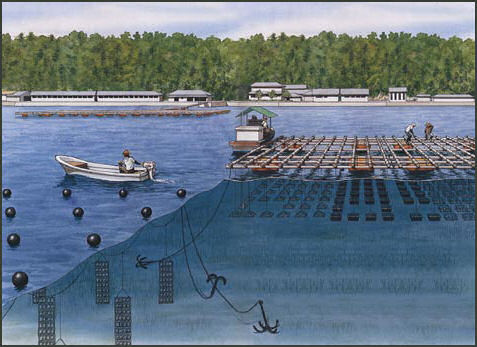
Cultured Pearl Cultivation in Japan
The oysters are implanted in Japan between April and June with one to six nuclei. In the early years the pearls were harvested after three years, when they developed a thick coating of nacre. Most are now harvested a year and half later between November and January when the cold water produced better color and luster. Lately some Japanese pearls are harvested after only six months with barely more than .3 millimeters of nacre. Any less than this and you can see the shell nucleus inside.
Japanese pearls have an inherent greenness. Most Japanese pearls are grown from four inch Akoya oysters. They produce classic white round saltwater pearls and ave traditionally been raised in Ago Bay off the Shuma Peninsula. Over the last couple of decades pearl production has declined. Overprotection has destroyed their market and pollution is harming the shells.
Employees at Japanese pearl companies are required to take an oath not to divulge the secret of how pearls are cultured or discuss how they are dyed or treated. No outsiders have ever been informed of these secrets either.
The Japanese peal industry is tightly regulated, Producers are allowed to cultivate or raise baby oyster but not both. Twice a year oyster breeder sell their young shellfish to oyster cultivators who seed the oysters to produce pearls. The Japanese are reportedly currently working on methods to process pearls entirely in the laboratory.
Sorting and Selling Cultured Pearls
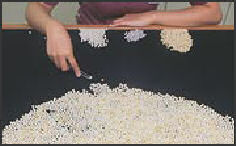
Pearls are sorted by pouring a bucket full of them onto an inclined glass. Only the round ones, called eight way rollers, reach the far end. Most of the pearls are slightly oval or pear or tear drop shaped. These pearls, which are used primarily for earrings, roll off the glass into shoots.
Pearls are sorted by color, size and quality by Japanese processors who make most of their decisions based on experienced and subjective judgements. These processor also oversee the matching, drilling and stringing of peals for necklaces.
Pearl farmers sell their pearls to middlemen at auctions in Tokyo and Kobe in December and January. Dealers from around the world must come to Japan to make their purchases from exporters.
There are no government bodies regulating the pearl industry. There is nothing to prevent consumers from getting pearls with a thin layer of nacre or one artificially tinted with pink dye after a hole has been drilled upside of it.
There is a Japanese inspection system. Many pearls that are rejected by the system make their way out of the country and into the marketplace through unscrupulous means.
Pearl Market
The pearl market went into recession in the 1960s when dressing casually became more fashionable. The industry recovered when fashion came back in fashion. During the pearl boom it was not unusual for a pearl cultivator to own 14 cars and walk around $10,000 in cash in yen stuffed in his pocket.
The Japanese control the pearl industry. Only a few Burmese whites, Australian giants, and Polynesian giants and pearls from the Philippines and Indonesia are sold outside the Japanese government endorsed monopoly. Pearls grown outside of Japan are seeded with Japanese technicians and processed in Japanese plants and sold at prices set by the Japanese.
About half of Japan's production is sold to the United States and most the low quality pearls end up in Hong Kong.
Japanese Pearling Industy
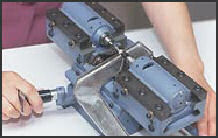
making a necklace Kobe is famed for pearls and is home to about 350 pearl-related companies, mostly processors and distributors. It accounted for 62.4 percent of Japan’s pearl exports in 2008 (35 tons worth $840 million).
Kobe it not only a major distributor for Japanese-produced white aokoya pearls it is also a major seller of South Sea pearls, which are purchased from their cultivators in Australia, Indonesia and Tahiti. About 60 percent of the distributors in Kobe export South Sea Pearls..
Hong Kong has recently overtaken Kobe in term so tonnage but most of its product are cheap Chinese freshwater pearls.
The Japanese pearl industry has been hurt by competition from freshwater pearls from China, the rising value of the yen and drop in customers due to the economic crisis in 2008 and 2009
Japanese are trying to give the pearl industry a boost by developing a new kinds of jewelry and accessories at cheaper prices and decorating things like cell phones with bags with pearls. One of the goals is to attract younger customers.
The pearling industry can be dangerous. In June 2009, a 49-year-old Japanese pearling expert was found dead under suspicious circumstances in a small island off of Java in Indonesia. He had bruises around his neck and injuries to his head. Two days before he was found dead the victim reported to police that he found two men trying to enter his office.
Pearls and the Oyster Blight
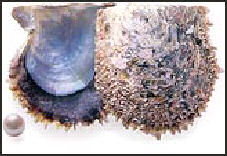
ayoka shell Japanese pearl producers have struggled with water contamination and oyster diseases, which some have blamed on global warming.
The Japanese pearl industry was hit hard by an oyster disease in the late 1990s. The worst hit area was Ehime Prefecture on the eastern shore of Shikoku, the source of up to 80 percent of the pearl oysters. The mysterious oyster blight began in Ehime in 1995 here and oyster were shipped all over the Japan from there before it was realized Ehime was the source of the blight. Between 60 and 70 percent of all pearl oyster in Japan died in 1996 and 1997.
The blight may have been linked to higher water temperatures that may be caused by global warming. It also may have been brought from Chin by cultivators trying to improve their breeding stocks.
In the 2000s, the death rate had been reduced to 20 percent by careful quarantining of uncontaminated breeding stocks. But by that time 15 percent of pearl cultivators and 23 percent of breeders had gone out of business, with some of them resorted to criminal activity to make money. One pearl producer was accused of bilking people out of millions of yen in shady fish farming deals.
Okinawa Pearls
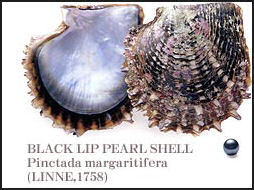
black pearl shell Okinawa used to be the only place in the world where black pearls were cultured. The water temperature, the direction the bay faces and the way the waves crash all help make the ideal an ideal place to cultivate them. The oysters were suspended in the water in baskets and raised every three months to be inspected and cleaned. In the 1960s one black pearl could fetch over $5000. The methods used to raise black pearls in Okinawa and now used to produce South Sea pearls in Tahiti, Australia and Indonesia.
Image Sources: Mikimoto Pearl Museum, Wikipedia
Text Sources: New York Times, Washington Post, Los Angeles Times, Daily Yomiuri, Times of London, Japan National Tourist Organization (JNTO), National Geographic, The New Yorker, Time, Newsweek, Reuters, AP, Lonely Planet Guides, Compton’s Encyclopedia and various books and other publications.
Last updated March 2023
